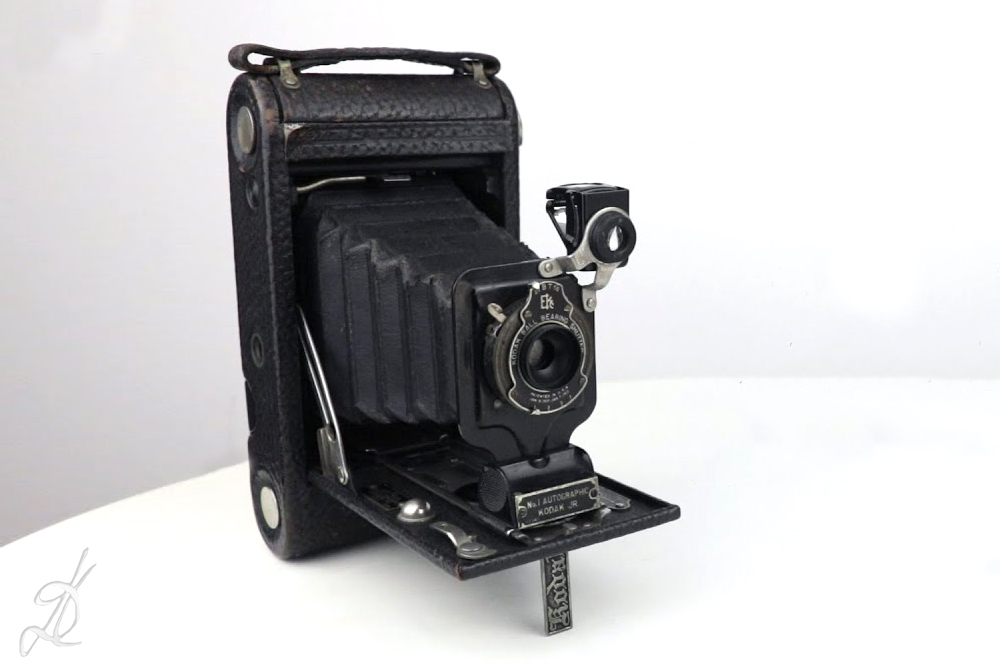No. 1 Autographic Kodak Junior

Model: No. 1 Autographic Junior
Manufacturer: Kodak, USA Type: Viewfinder folding Dates: 1914-1927 Film format: 120 (6x9) Shutter speeds: Kodak Ball Bearing Shutter - B, T, 1/25, 1/50 (many variations) Lens: Meniscus Achromatic ~130mm, f/11 (many variations of lens)The No. 1 Autographic Kodak Junior is a folding camera made in the years 1914-1927. The No. 1 used 120 film and can take 8 photos in 6x9 format. For larger film formats there also was the No. 1A, which was slightly larger and used the -now obsolete- 116 film.
The camera was intended to use the "Autographic" film (hence the name) which was a film type -not produced any more- which allowed to record notes directly on the film with the help of a small spring-door on the back and a stylus. Modern films do not support this feature, so while the camera is loaded, the autographic spring-door must not be opened, or it may cause light leaks.
This camera came with many variations of shutter-lens combinations giving a wide range of options to the photographers. This one here has the Kodak Ball Bearing Shutter with a Meniscus Achromatic lens. This shutter has four speeds: 1/25. 1/50, B, T.
"B" stands for "Bulb": the shutter stays open for as long as you hold the shutter release lever down. "T" stands for "Time": once the shutter release lever is pressed the shutter stays open. It will close only when the lever is pressed again.
The aperture indications are in the "Kodak format" with plain numbers. Converting those to f/stops is: f/11 (1), f/16 (2), f/22 (3), f/32(4).
The camera's bed has a focusing plate, so by adjusting the bellows extension, you can focus at 100ft (30m), 25ft (8m) or 8ft (2.5m). There is actually no need for accurate distance measurment, unless your subject is closer than 15ft (4,5m). Also, if your subject is closer than 6ft (1.8m) you will need an extra close-up lens.
You can hold the camera vertically or horizontally, to take, respectively, portrait or landscape photographs. You can rotate the viewfinder depending on how you are holding the camera. The viewfinder must be viewd from weist-height, while holding the camera against your body.
Before using, it is important to check the bellows for holes. If there are holes (even little ones) your photos will result with light leaks, or in cases where there are big holes, your film will be ruined. To check the bellows for holes, open the back and extend the bellows in a dark room. Insert a flashlight from within and if there are any pinholes you'll be able to see them by looking at the camera from the outside, while moving the torch around the interior.



